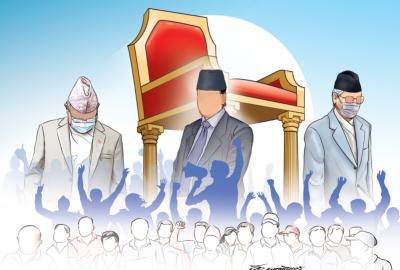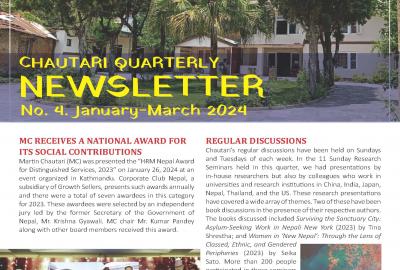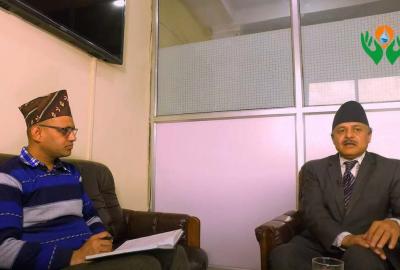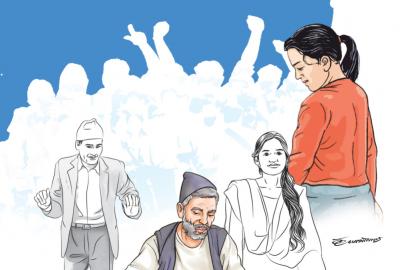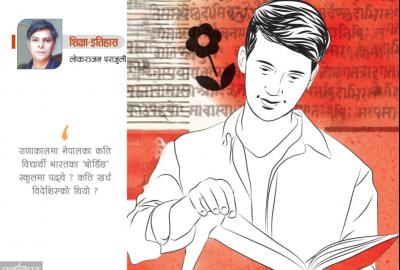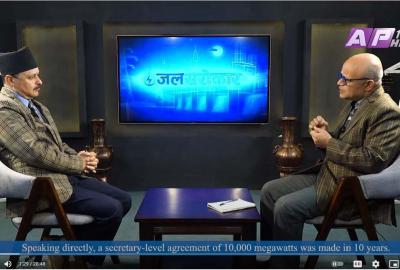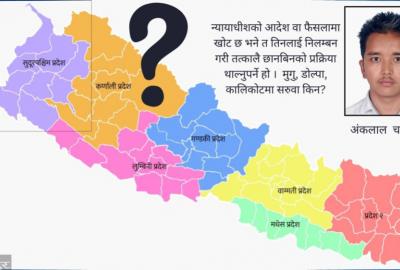Transitioning to research in a subaltern university
May 12, 2018-Although Nepal’s oldest university Tribhuvan University (TU) was founded in 1959 as a teaching-only university, within some years of its founding, research efforts had already begun there in many different central departments and research institutes. Some of this started happening during the second half of the 1960s when some students opted to do research for their MA and PhD theses. This “transitioning to research” process at TU is incomplete, much like our country’s march towards democracy.
There are two good reasons to remind ourselves about this transition. First, when this transition is recognised as an ongoing process, any categorical statement that declares TU to be a non-research producing university becomes inaccurate. It goes without saying that inaccurate descriptions can hardly be helpful in the design of needed interventions at TU which admittedly suffers from many ills.
Second, TU’s transition to research is part of the much larger global history of research in universities in majority parts of the world. As members of the general public we have been far too obsessed with the tiny number of leading research universities in the Euro-American world for a very long time. Academic documentation and analysis have followed our obsession accordingly. For instance, Roger Geiger’s 1986 book To Advance Knowledge: The Growth of American Research Universities, 1900-1940 discusses the transition of some of America’s greatest research universities from “provincial outposts in the world of knowledge to leaders in the critical areas of science” within the span of a few decades.
More recently, contributors to The Road to Academic Excellence: The Making of World-Class Research Universities (2011), edited by Philip G Altbach and Jamil Salmi, discuss the leading research universities in countries such as China, South Korea, Singapore, India, Chile and elsewhere. Missing in these books are discussions of what I have called “the transition to research” that started happening in hundreds of globally not-so-famous universities around the world in the latter decades of the 20th century. While much of our obsession with research universities has been focused on very successful institutions, a history of the kind I am proposing here would amount to a subaltern history of research (in) universities. Subaltern because this would be a history of research practices and debates around how to organise research in globally obscure universities. Universities like TU are peripheral institutions in the global enterprise of research although in their own national contexts, they are, paradoxically, spaces of privilege.
A subaltern history of research (in) universities like TU would allow us to rescue the unknown MA thesis writer—and many other subalterns that made academia possible—from the “enormous condescension” (borrowing the famous phrase of the late British historian EP Thompson) of the academic historians who have documented the history of higher education/research in elite universities world over. There are many ways to tell this history. I would simply like to share one vignette that shows an early transition at TU.
The first three MA theses in History
Tri Ratna Manandhar, an accomplished historian of modern Nepal who also happens to be a former dean of TU and a former Vice Chancellor of Lumbini Buddhist University, finished his MA in history at TU in 1966. He did not do a thesis to complete his MA degree, an option that had become available to history students at TU in 1965. Instead he chose to write an essay in a multi-hour exam and earned his degree. He started teaching history in TU in 1967. One of his first students was the late Fr Ludwig F Stiller (1928-2009) who started studying the history of Nepal at TU as a private student in 1966.
Stiller finished his MA at TU in 1967 and was one of the first three students who got their MA in history after writing a thesis. Stiller wrote in English about Prithvi Narayan Shah’s Dibya Upadesh and was supervised by Dr Hit Narayan Jha, the only faculty member who had a PhD and hence was eligible for such supervisory work. His thesis was published as a book in 1968 with the title Prithwinarayan Shah in the Light of Dibya Upadesh. The book version had five chapters and had a bibliography which listed 36 books (26 in English, eight in Nepali, one in French and one in Italian) and three journal articles. Stiller went on work as a professional historian and produced some stellar books.
The second person to write an MA thesis in history in 1967 was Netra Rajya Laxmi Rana. She wrote about “The Anglo-Gorkha War (1814-16)” which was published in 1970 under the same title. Her thesis, written in English, had five chapters and referred to almost four dozen books. She also gave copies of 10 documents in the appendix of her work. Her thesis too was supervised by Dr Jha who also supervised the third MA theses completed that year, one by Bir Nath Karmacharya who wrote about “The Mallas of Patan.”
The transition analysed
The short period between Manandhar’s MA degree in history without a thesis in 1966 to the awarding of the same degree to Stiller, Rana and Karmacharya after they had written their theses in 1967 marks one small transition in research making at TU. To appreciate this transition, I would like to draw your attention to the details of how the three theses mentioned above were executed. In each of the three cases, we have a resulting thesis focused on a thematic inquiry. Each author refers to other published and in one case unpublished works, written in two or more languages. While many of the bibliographic references are to books, some are to articles published in journals. All three theses were also supervised by a faculty member who I imagine must have signed the official copy of the same submitted to TU. In his preface to the published book resulting from his thesis, Stiller thanks his supervisor Dr Jha by saying the latter’s “patient and purposeful guidance made this book possible.” Stiller also thanks TU historian Tulsi Ram Vaidya for suggesting the idea for his research and the late non-TU historian Baburam Acharya and his staff for their assistance “in the translation and understanding of the Dibya Upadesh.”
Here in a nutshell are the first steps of research by MA students in history at TU. In 1967, there were students who chose to write an MA thesis as part of their formal degree requirements. They did so under a faculty member as their mentor. They produced texts of various lengths in a format known to researchers elsewhere in and outside of Nepal with citations, footnotes and bibliographies. Fifty years later, the skills involved in this execution escape our attention because these practices and accouterments of the research enterprise have become commonsensical to those in the academic profession.
Just because there were modular thesis formats available elsewhere for emulating did not mean that they were part of the research repertoire at TU’s history department before 1967. These modular forms had to be domesticated and realised in each individual case, one thesis at a time. When one student finished an MA thesis in history at TU, one small step in the transition to research was achieved at what had erstwhile been a teaching-only university.
The vignette described here and the many others we could add tell us about how research as an academic activity slowly steeped into the ethos of academic karma at TU, making it a research university under transition.
The author tweets @pratyoushonta

